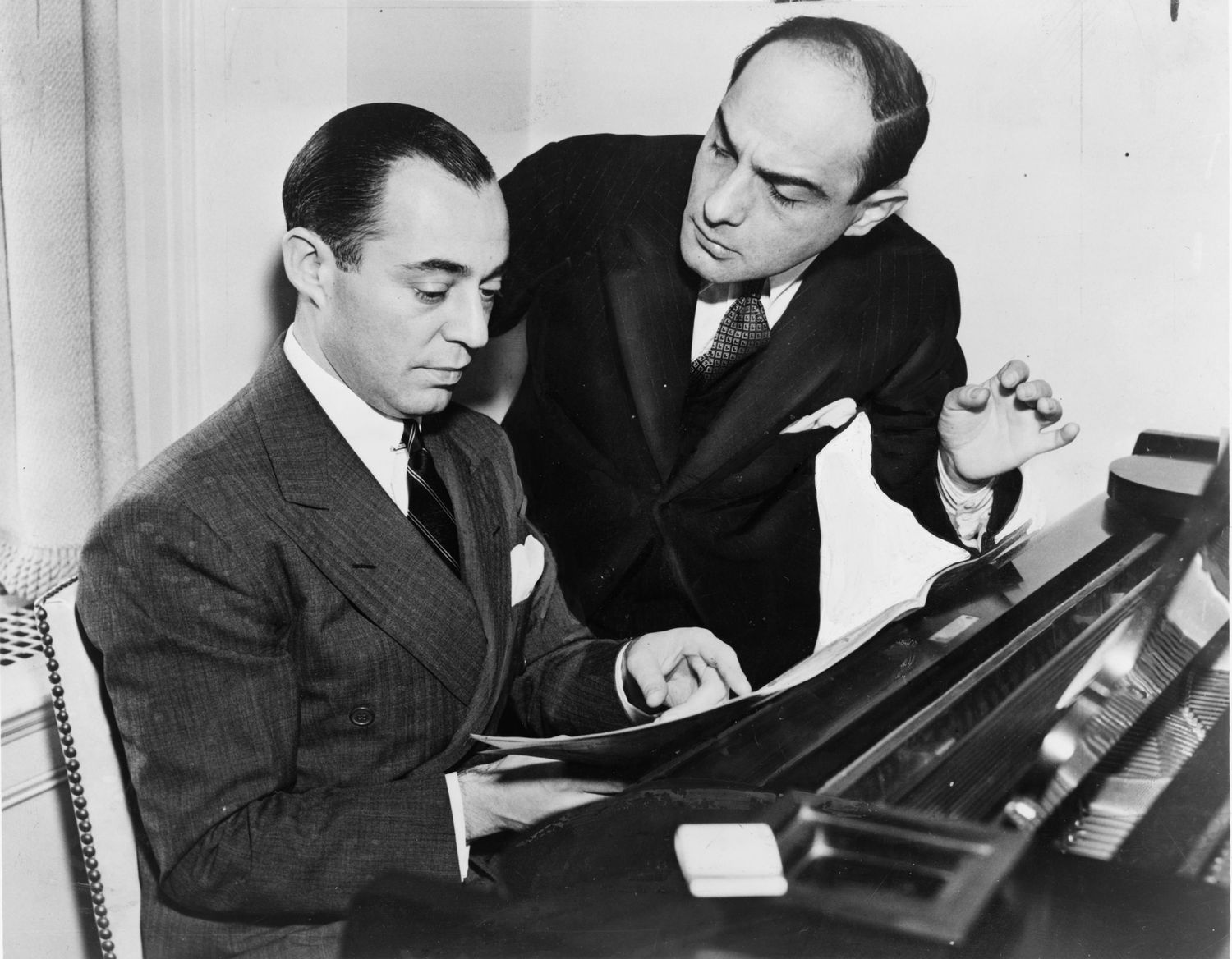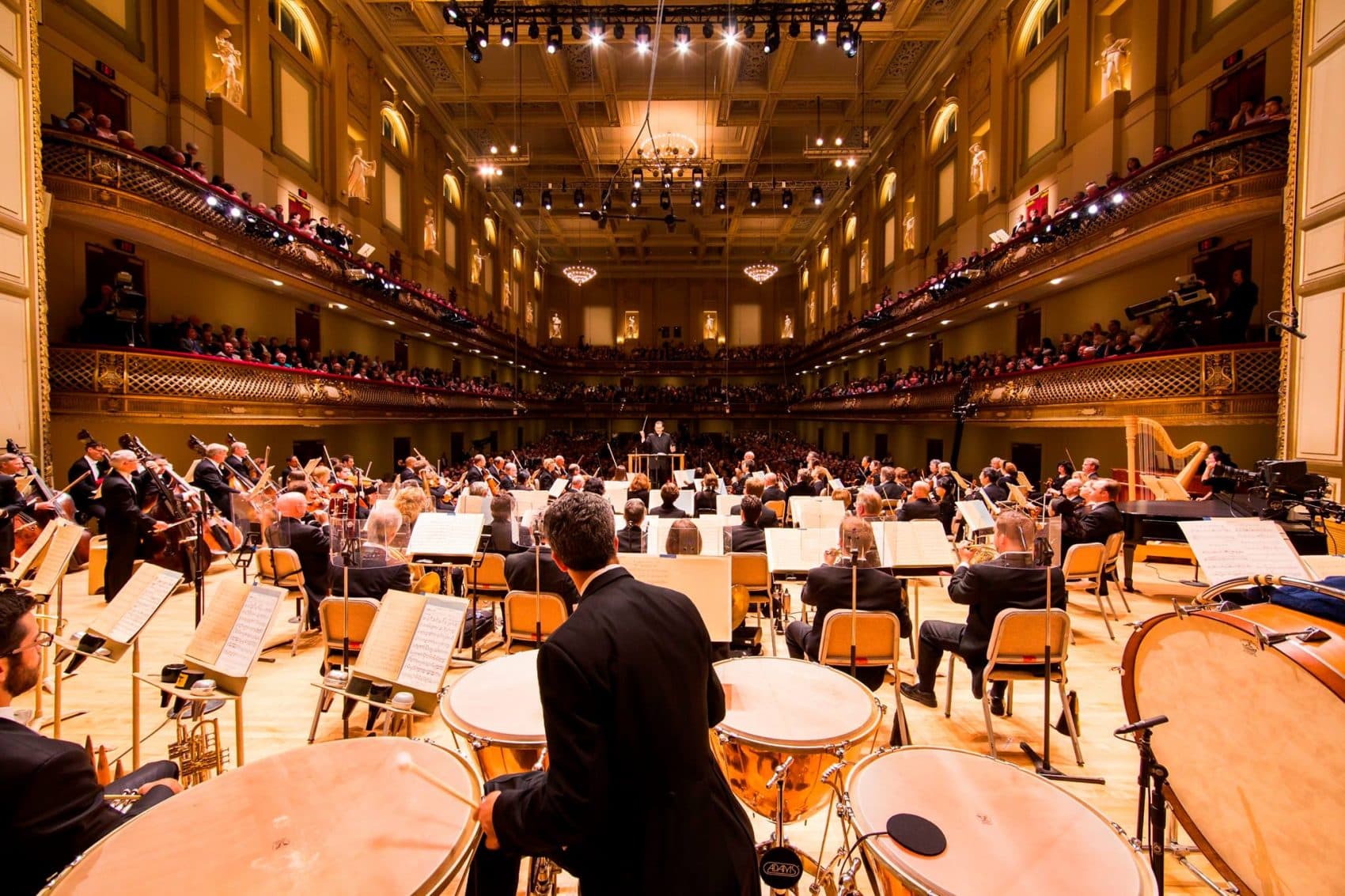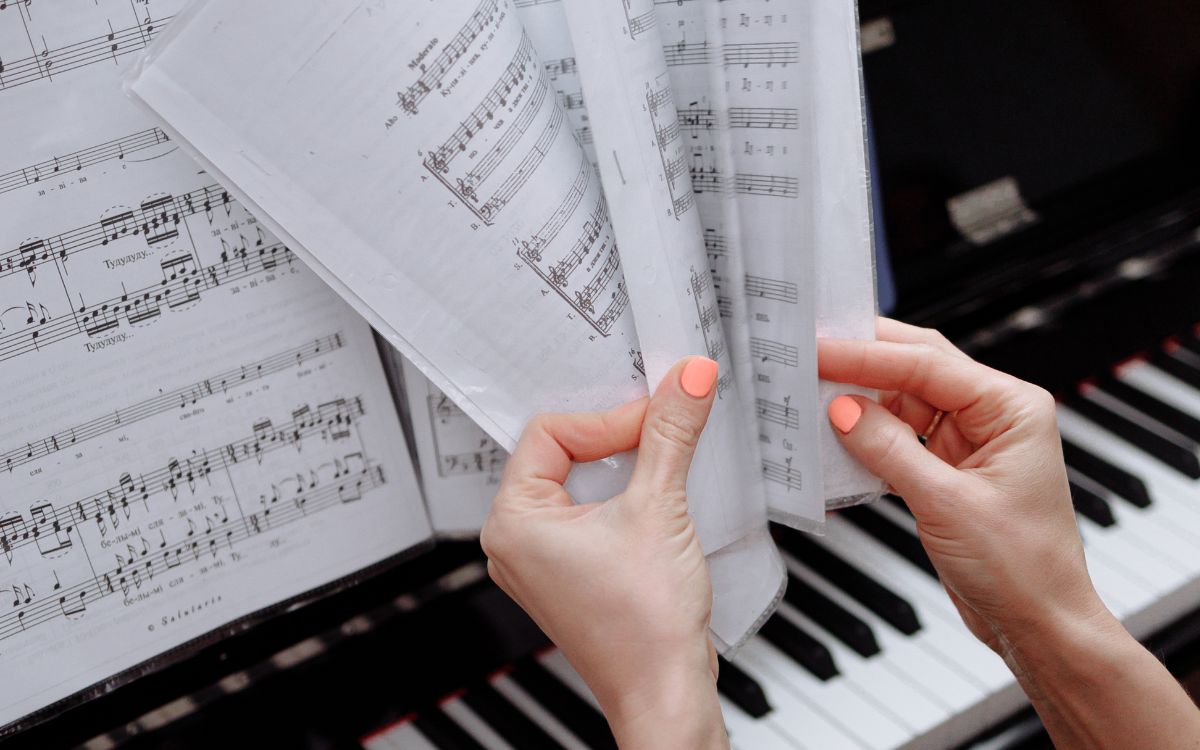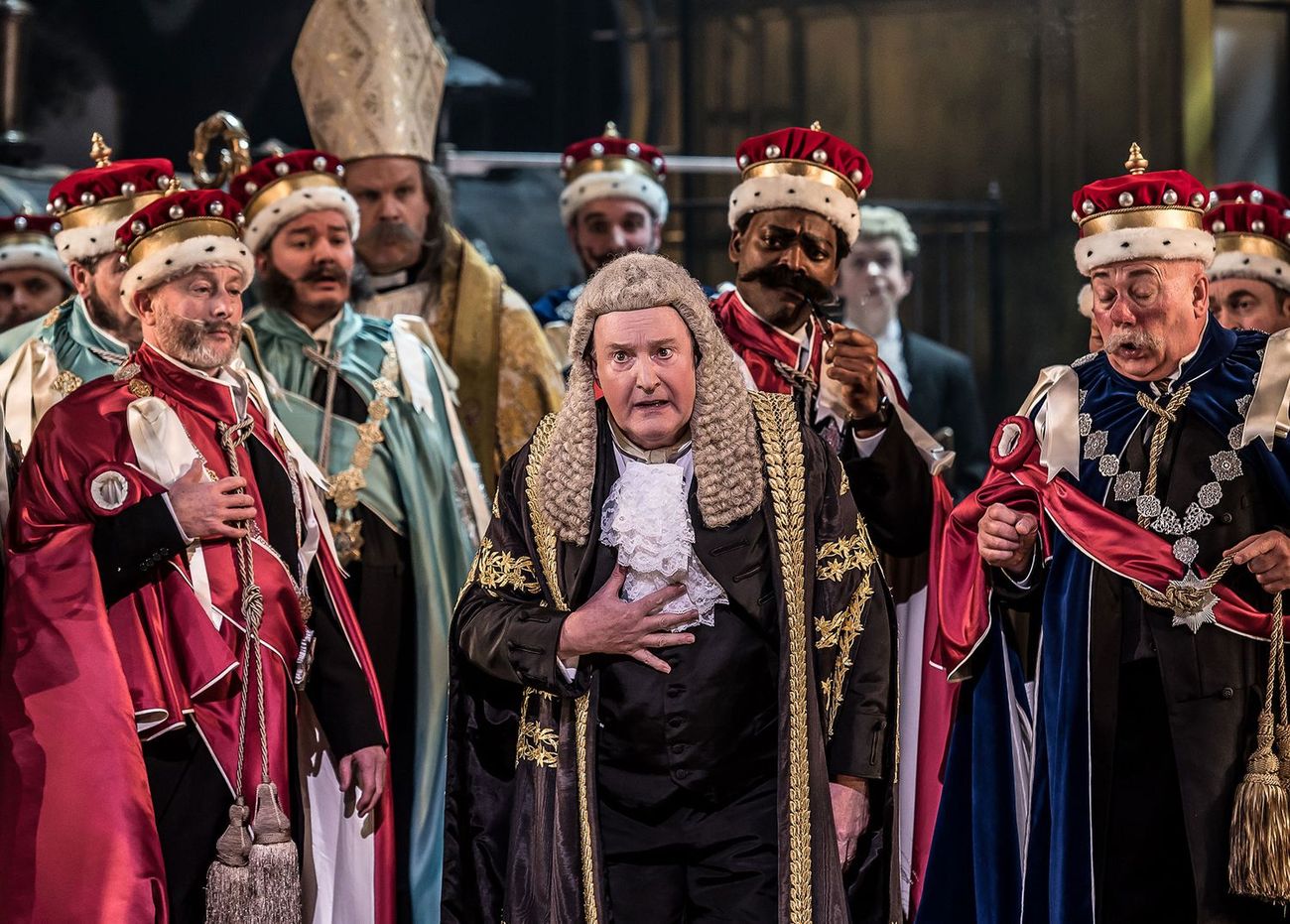Home>Production & Technology>Orchestra>What Is The Difference Between An Orchestra And A Symphony


Orchestra
What Is The Difference Between An Orchestra And A Symphony
Published: February 24, 2024
Discover the key distinctions between an orchestra and a symphony, and learn how each contributes to the world of classical music. Explore the role of an orchestra and its significance in musical performances.
(Many of the links in this article redirect to a specific reviewed product. Your purchase of these products through affiliate links helps to generate commission for AudioLover.com, at no extra cost. Learn more)
Table of Contents
Introduction
The world of classical music is a rich tapestry of sound, emotion, and history. At the heart of this musical landscape are two fundamental entities: the orchestra and the symphony. While these terms are often used interchangeably, they represent distinct components within the realm of classical music. Understanding the difference between an orchestra and a symphony is essential for anyone seeking to appreciate and delve into the nuances of this art form.
The orchestra and the symphony are integral to the classical music tradition, each playing a unique role in shaping and delivering the masterpieces of renowned composers. By exploring the defining characteristics of these entities, we can gain a deeper insight into the intricate workings of classical music and the captivating performances that have enraptured audiences for centuries.
Delving into the world of orchestral music, we encounter a diverse ensemble of talented musicians, each proficient in their respective instruments, coming together under the guidance of a conductor. In contrast, the symphony represents a specific form of musical composition, often performed by an orchestra. The distinction between these two entities lies not only in their definitions but also in their roles, compositions, and performances.
As we embark on this exploration, we will unravel the distinct features of orchestras and symphonies, shedding light on their individual significance within the realm of classical music. Through this journey, we will gain a deeper appreciation for the artistry, precision, and passion that define both the orchestra and the symphony. Let's embark on this musical odyssey to uncover the captivating differences between these two pillars of classical music.
Definition of Orchestra
An orchestra is a magnificent ensemble comprising a diverse array of musical instruments, meticulously arranged to produce harmonious and symphonic melodies. It serves as a captivating embodiment of classical music, bringing together talented musicians who masterfully interpret the compositions of renowned maestros. The orchestra is a testament to the collective prowess of individual instrumentalists, each contributing their unique timbre and expertise to create a mesmerizing auditory experience.
At its core, an orchestra typically encompasses four instrumental families: strings, woodwinds, brass, and percussion. The string section, comprising violins, violas, cellos, and double basses, forms the foundation of the orchestra's sonic tapestry, infusing the music with rich, resonant tones. The woodwind section, featuring instruments such as flutes, oboes, clarinets, and bassoons, adds a melodic and ethereal quality to the ensemble's sound. The brass section, with trumpets, trombones, French horns, and tubas, contributes powerful and majestic tones, enhancing the grandeur of orchestral performances. Meanwhile, the percussion section, including timpani, snare drums, cymbals, and other rhythmic instruments, provides rhythmic depth and dramatic impact to the orchestra's repertoire.
The orchestra's composition is meticulously crafted, with each instrument contributing to the overall sonic landscape. This intricate interplay of musical voices, under the guidance of a conductor, results in awe-inspiring performances that transport audiences into the realm of musical enchantment. The conductor, a pivotal figure within the orchestra, wields a baton to lead and synchronize the musicians, ensuring seamless coordination and interpretation of the musical score.
Furthermore, orchestras are known for their versatility, capable of interpreting a wide spectrum of musical genres, from classical symphonies and concertos to contemporary compositions and film scores. Their adaptability and virtuosity enable them to breathe life into diverse musical arrangements, captivating audiences with their emotive renditions.
In essence, an orchestra represents the epitome of musical collaboration, where individual virtuosity converges to create a harmonious and transcendent auditory experience. Its profound impact on the world of classical music is undeniable, as it continues to inspire and enthrall audiences across the globe, underscoring its enduring significance in the realm of musical artistry.
Definition of Symphony
A symphony is a grand and elaborate musical composition designed to be performed by an orchestra, showcasing the virtuosity of the ensemble and the ingenuity of the composer. It represents a monumental artistic endeavor, characterized by its multi-movement structure and the seamless integration of diverse musical themes and motifs. The symphony serves as a testament to the creative genius of composers, offering a platform for the exploration of musical expression and thematic development on a grand scale.
Typically, a symphony consists of four movements, each with its distinct tempo, mood, and musical motifs. The first movement, often marked as allegro, serves as an energetic and captivating introduction, setting the tone for the symphonic journey that unfolds. This movement often features bold and dramatic themes, showcasing the orchestra's prowess in delivering powerful and emotive musical narratives.
The second movement, frequently characterized by a slower tempo such as adagio or andante, introduces a contrasting emotional landscape, evoking sentiments of introspection, tenderness, or melancholy. This movement allows for the exploration of lyrical melodies and expressive harmonies, demonstrating the orchestra's ability to convey profound emotional depth and sensitivity.
In contrast, the third movement, often designated as a scherzo or minuet, injects a spirited and lively energy into the symphony, featuring playful and rhythmic motifs that showcase the ensemble's dexterity and cohesion. This movement serves as a delightful interlude within the symphonic tapestry, offering moments of exuberance and rhythmic intricacy.
Finally, the fourth movement, frequently marked as allegro or presto, culminates the symphony with a triumphant and resounding finale, bringing together the thematic elements introduced in earlier movements to create a climactic and awe-inspiring musical resolution. This movement often embodies a sense of grandeur, showcasing the orchestra's collective brilliance and the composer's masterful orchestration.
The symphony represents a canvas for artistic innovation and expression, allowing composers to weave intricate musical narratives and explore a diverse range of emotions and thematic variations. It serves as a testament to the enduring legacy of classical music, captivating audiences with its grandeur, complexity, and emotive depth.
In essence, the symphony stands as a pinnacle of orchestral composition, embodying the collaborative artistry of the orchestra and the visionary creativity of composers. Its enduring appeal and profound impact on the world of classical music underscore its significance as a cornerstone of musical excellence and artistic ingenuity.
Differences in Composition
The composition of an orchestra and a symphony stands as a defining contrast between these two entities within the realm of classical music. While an orchestra represents a multifaceted ensemble of diverse instruments, the symphony embodies a grand and elaborate musical composition designed to be performed by an orchestra.
In the context of an orchestra, the composition encompasses a rich tapestry of instrumental voices, meticulously arranged to create harmonious and symphonic melodies. The ensemble comprises four primary instrumental families: strings, woodwinds, brass, and percussion. The string section forms the foundation of the orchestra's sonic landscape, infusing the music with rich, resonant tones, while the woodwinds add a melodic and ethereal quality. The brass section contributes majestic and powerful tones, and the percussion section provides rhythmic depth and dramatic impact. The orchestra's composition is a testament to the collaborative synergy of these instrumental families, each contributing its unique timbre and musical voice to the collective ensemble.
On the other hand, a symphony represents a grand and multi-movement musical composition, meticulously crafted to showcase the virtuosity of an orchestra and the creative genius of the composer. Typically comprising four movements, each with its distinct tempo, mood, and thematic motifs, the symphony serves as a platform for the exploration of musical expression on a monumental scale. The first movement often sets an energetic and captivating tone, featuring bold and dramatic themes, while the second movement introduces a contrasting emotional landscape, evoking sentiments of tenderness or melancholy. The third movement injects a spirited and lively energy, showcasing the ensemble's dexterity, and the fourth movement culminates the symphony with a triumphant and resounding finale, bringing together the thematic elements to create a climactic resolution.
In essence, the composition of an orchestra embodies the collective synergy of instrumental voices, while a symphony represents a grand and elaborate musical narrative, meticulously structured to showcase the orchestra's prowess and the composer's creative vision. These distinct approaches to composition underscore the captivating differences between the orchestra and the symphony, highlighting their unique roles within the realm of classical music.
Differences in Performance
The differences in performance between an orchestra and a symphony are profound, reflecting the unique roles and expressive capabilities of these entities within the realm of classical music.
An orchestra's performance is a captivating display of collective artistry, where a diverse ensemble of instrumentalists converges to interpret a wide spectrum of musical genres, from classical symphonies and concertos to contemporary compositions and film scores. The orchestra's versatility and virtuosity enable it to breathe life into diverse musical arrangements, captivating audiences with its emotive renditions. The performance of an orchestra is a testament to the collaborative synergy of individual instrumental voices, meticulously woven together under the guidance of a conductor. The conductor, wielding a baton, leads and synchronizes the musicians, ensuring seamless coordination and interpretation of the musical score. This orchestral performance showcases the ensemble's precision, emotive depth, and dynamic range, captivating audiences with its ability to evoke a myriad of emotions and transport listeners into the realm of musical enchantment.
In contrast, a symphony's performance represents a grand and elaborate musical narrative, meticulously structured to showcase the orchestra's prowess and the composer's creative vision. The symphony, typically comprised of four movements, serves as a platform for the exploration of musical expression on a monumental scale. Each movement unfolds with its distinct tempo, mood, and thematic motifs, allowing the orchestra to showcase its versatility and interpretative prowess. From the energetic and captivating introduction of the first movement to the triumphant and resounding finale of the fourth movement, the symphony's performance embodies a seamless integration of diverse musical themes and motifs, captivating audiences with its grandeur, complexity, and emotive depth. The symphony's performance transcends mere musical interpretation; it becomes a transformative journey, where the orchestra becomes a conduit for the composer's vision, delivering a profound and immersive experience that resonates with audiences on a profound emotional and artistic level.
In essence, the differences in performance between an orchestra and a symphony underscore their unique roles within the realm of classical music. While an orchestra's performance embodies collaborative artistry and versatility, a symphony's performance represents a grand and immersive narrative, showcasing the orchestra's interpretative prowess and the composer's creative genius. These distinctions in performance serve as a testament to the captivating diversity and expressive potential of orchestral music, enriching the musical landscape with their distinct and awe-inspiring performances.
Role of Conductor
The role of the conductor within both the orchestra and the symphony is paramount, serving as the guiding force that shapes and elevates the musical performance to unparalleled heights. As the maestro of the ensemble, the conductor embodies a multifaceted role that encompasses leadership, interpretation, and artistic direction, wielding a baton to orchestrate a symphony of musical voices with precision and finesse.
In the context of an orchestra, the conductor assumes the role of a musical architect, meticulously shaping the ensemble's interpretation of the musical score. With a profound understanding of the composer's intent and the nuances of musical expression, the conductor leads the orchestra with a blend of authority and sensitivity, eliciting emotive and nuanced performances from the ensemble. Through subtle gestures, expressive movements, and unwavering focus, the conductor communicates musical phrasing, dynamics, and tempo, guiding the musicians to collectively breathe life into the composition. The conductor's ability to unify the diverse instrumental voices within the orchestra, fostering cohesion and synergy, is instrumental in delivering captivating and immersive performances that resonate with audiences.
Similarly, in the realm of the symphony, the conductor assumes a pivotal role in realizing the composer's grand vision, navigating the intricate terrain of multi-movement compositions with finesse and insight. With a keen understanding of thematic development, musical structure, and emotive depth, the conductor shapes the symphony's narrative, infusing each movement with a distinct emotional trajectory and cohesive thematic continuity. Through masterful interpretation and expressive direction, the conductor guides the orchestra through the symphony's dynamic landscape, eliciting a seamless fusion of musical motifs and evocative storytelling. The conductor's ability to harness the orchestra's interpretative prowess, drawing out nuanced nuances and emotive depth, is essential in delivering symphonic performances that captivate and transport audiences.
In essence, the role of the conductor transcends mere leadership; it embodies a profound artistic stewardship that shapes and enriches the musical tapestry woven by the orchestra and the symphony. Through unwavering passion, expertise, and a deep reverence for the composer's vision, the conductor breathes life into musical scores, elevating performances to transcendent heights and imbuing them with an enduring legacy of artistic excellence.
Conclusion
In conclusion, the orchestra and the symphony stand as pillars of classical music, each embodying unique facets of artistic expression and collaborative artistry. The orchestra, with its diverse ensemble of instrumental voices, represents a testament to the collective synergy of individual musicians, coming together under the guidance of a conductor to deliver captivating and versatile performances across a wide spectrum of musical genres. From the resplendent resonance of the string section to the majestic brass fanfares and the rhythmic depth of the percussion, the orchestra's composition reflects a harmonious convergence of timbres and textures, captivating audiences with its emotive renditions and virtuosic interpretations.
On the other hand, the symphony represents a grand and elaborate musical narrative, meticulously structured to showcase the orchestra's interpretative prowess and the composer's creative vision. Through multi-movement compositions, the symphony becomes a transformative journey, where the orchestra serves as a conduit for the composer's grand vision, delivering profound and immersive experiences that resonate with audiences on a profound emotional and artistic level. The symphony's performance transcends mere musical interpretation, offering a platform for the exploration of musical expression on a monumental scale, captivating audiences with its grandeur, complexity, and emotive depth.
The role of the conductor, both within the orchestra and the symphony, emerges as a defining element that elevates performances to unparalleled heights. With a blend of authority, sensitivity, and unwavering passion, the conductor shapes and enriches the musical tapestry, guiding the ensemble through nuanced nuances and emotive depth, delivering captivating and transcendent performances that leave an indelible mark on audiences.
In essence, the orchestra and the symphony, with their captivating differences in composition, performance, and the pivotal role of the conductor, underscore the captivating diversity and expressive potential of orchestral music. Their enduring significance within the realm of classical music enriches the musical landscape, captivating and inspiring audiences with their distinct and awe-inspiring performances, underscoring their timeless legacy of artistic excellence and creative ingenuity.











